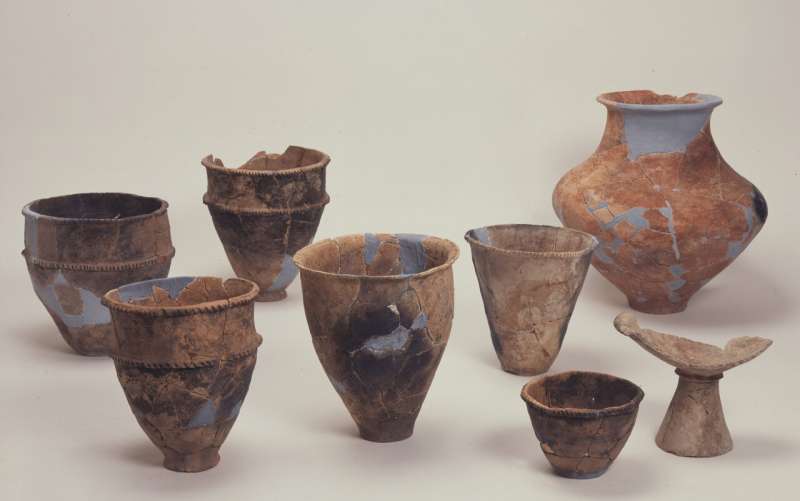Science
New Findings Reveal Millet’s Unexpected Absence in Ancient Japan

Recent archaeological research has unveiled intriguing insights into ancient Japanese cuisine, particularly regarding the crop millet. Despite its introduction alongside rice approximately 3,000 years ago from the Korean Peninsula, millet failed to establish itself in early Japanese diets. This finding challenges established notions about the impact of agricultural advancements on cultural practices, particularly in culinary traditions.
Archaeological Evidence Sheds Light on Culinary Practices
Researchers from the University of York, in collaboration with the University of Cambridge and the Nara National Research Institute for Cultural Properties in Japan, examined residues from ancient pottery and charred plant remains to understand the role of rice and millet in early Japanese society. Their findings, published in the Proceedings of the National Academy of Sciences, reveal that while both crops were present, millet did not significantly influence local diets.
Dr. Jasmine Lundy from the University of York’s Department of Archaeology emphasized the importance of organic residue analysis in their research. “It allows us to capture how these crops were actually used, offering a direct window into the culinary practices and crop interactions of early Japanese society,” she noted.
The study confirmed that both rice and millet were introduced to early farming settlements in Northern Kyushu. However, the anticipated dietary shift towards millet, which was a staple in Korean cooking during the Bronze Age, did not occur in Japan.
Unexpected Dietary Trends and Cultural Resistance
Professor Oliver Craig, also from the University of York, expressed surprise at the absence of millet in food residues and human remains. “We know from isotope analysis of fats and oils in cooking pots that millet was a major part of the Korean diet, and continues to be eaten to this day, but it seemed that it made no impact on early Japanese cuisine,” he stated.
Environmental factors were ruled out, as millet grows well in Japan. The research indicated that traditional fish dishes remained the cornerstone of Japanese cuisine, overshadowing the introduction of rice and millet. Dr. Shinya Shoda of the Nara National Research Institute remarked, “There is evidence of Korean-style pottery and farming tools in Japan, but this didn’t line up with changes to the way people cooked and ate.” Yayoi pottery continued to be predominantly used for preparing fish and wild foods, with few signs of adaptation for rice cooking.
The findings parallel other historical examples where technological advancements did not lead to rapid cultural shift. In Southern Scandinavia, for instance, hunting and gathering persisted long after the advent of farming, contrasting with other regions like Britain, where agriculture quickly replaced foraging practices.
Professor Craig concluded by highlighting the remarkable consistency of Japanese food culture despite the arrival of new crops. “While we see changes in pottery styles and other forms of material culture in Japan, food culture remains remarkably consistent. It may have taken time for the rice boom seen in Korea to influence everyday practices in Japan, suggesting that culinary traditions are deeply embedded and can withstand significant technological shifts.”
This research is part of the broader ENCOUNTER Project, led by Dr. Enrico Crema at the University of Cambridge. The project aims to explore the diffusion of farming practices across the Japanese archipelago and their demographic impacts. As this study illustrates, the complex interplay between technology and cultural practices continues to provide valuable insights into ancient societies.
-

 Technology5 months ago
Technology5 months agoDiscover the Top 10 Calorie Counting Apps of 2025
-

 Technology3 weeks ago
Technology3 weeks agoOpenAI to Implement Age Verification for ChatGPT by December 2025
-

 Health3 months ago
Health3 months agoBella Hadid Shares Health Update After Treatment for Lyme Disease
-

 Health3 months ago
Health3 months agoAnalysts Project Stronger Growth for Apple’s iPhone 17 Lineup
-

 Health4 months ago
Health4 months agoErin Bates Shares Recovery Update Following Sepsis Complications
-

 Technology5 months ago
Technology5 months agoDiscover How to Reverse Image Search Using ChatGPT Effortlessly
-

 Technology3 months ago
Technology3 months agoElectric Moto Influencer Surronster Arrested in Tijuana
-

 Technology5 months ago
Technology5 months agoMeta Initiates $60B AI Data Center Expansion, Starting in Ohio
-

 Technology2 months ago
Technology2 months agoDiscover 2025’s Top GPUs for Exceptional 4K Gaming Performance
-

 Technology5 months ago
Technology5 months agoRecovering a Suspended TikTok Account: A Step-by-Step Guide
-

 Health5 months ago
Health5 months agoTested: Rab Firewall Mountain Jacket Survives Harsh Conditions
-

 Lifestyle5 months ago
Lifestyle5 months agoBelton Family Reunites After Daughter Survives Hill Country Floods





















